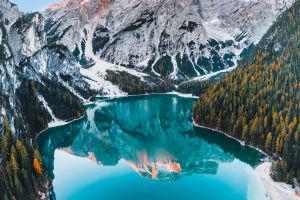There is a small town in Arizona, located in the southwestern United States, that lacks prosperity. Although there is nothing particularly unique about this town, it witnesses an incessant stream of cars passing through its roads every day.
The reason behind this constant traffic is the presence of numerous famous national parks in the surrounding region, which attract visitors from far and wide.
Nestled not far to the southeast of this unassuming town are two enigmatic canyons. These canyons possess an aura of mystique, particularly when the sun illuminates the deep and tranquil valleys, creating a mesmerizing dance of light and shadow.
One of these canyons, known as Antelope Canyon, has gained worldwide recognition as a renowned slot canyon and a popular photography destination.
Situated in the northern part of Arizona, USA, Antelope Canyon is closest to the city of Page and falls within the Navajo National Reserve. The canyon itself is divided into two distinct sections: Upper Antelope Canyon and Lower Antelope Canyon.
Antelope Canyon holds historical significance as it is situated within the ancestral lands of the Navajo tribe, where Western legends played out centuries ago. As one of the United States' most celebrated canyons, a trip to Arizona and southern Utah would be incomplete without a visit to Antelope Canyon.
Among the two sections, Upper Antelope Canyon takes center stage. Despite its smaller size compared to other canyons in the area, spanning only about 91 meters, it attracts thousands of tourists and photographers each year.
Although Antelope Canyon is categorized as a slot valley, venturing deep into its confines reveals a wondrous palace of art. The seemingly soft canyon walls are actually composed of resilient rock, meticulously sculpted by nature.
Delicate layers flow along the walls, reminiscent of ancient waves frozen in time. As sunlight penetrates the canyon from above, it creates a breathtaking display of vibrant colors. Many have referred to Antelope Canyon as "a place touched by God" due to its ethereal beauty.
Navigating the canyon's floor is not without obstacles; the path is winding and irregular. Moreover, without the guidance of a Native Indian guide, visitors would have little chance of finding their way through the canyon solely by following the sun's rays.
The formation of Antelope Canyon has been shaped over hundreds of thousands, if not millions, of years. The once sharp and jagged peaks have gradually been smoothed by the relentless passage of time, leaving behind the captivating vistas that visitors witness today.
Among the remarkable features of Antelope Canyon, the most renowned is the occurrence of sunbeams. During specific times, sunlight filters through the narrow slits at the canyon's apex and cascades downward, creating a spectacular beam effect.
These radiant beams traverse the canyon, interacting with the dust particles and aerosols present in the air, resulting in awe-inspiring light and shadow play that permeates the atmosphere with an air of mystery and enchantment.
Photographers flock to capture these magnificent sights, especially during the early morning and dusk hours when the beam effect is most pronounced.
Aside from the sunbeams, Antelope Canyon boasts numerous other fascinating geological formations. The canyon walls showcase an array of hues, ranging from deep reds and vibrant oranges to warm yellows and pristine whites, creating a diverse and captivating landscape.
Under the gentle caress of sunlight, these colors come alive, radiating with intensity and captivating observers. The intricate textures and distinctive shapes adorning the rock walls form an array of mesmerizing patterns, evoking the sensation of being immersed in a colossal masterpiece crafted by nature itself.


